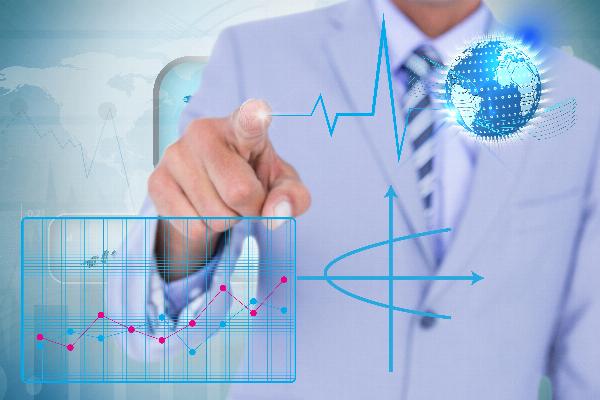 AI Blog Generation – Mass Content at Lightning Speed!
AI Blog Generation – Mass Content at Lightning Speed!
The Impact of Diagnostic Analytics on Modern Healthcare
Written by Tellius » Updated on: June 17th, 2025

In the realm of modern healthcare, diagnostic analytics stands out as a transformative force, revolutionizing the way diseases are detected, diagnosed, and managed. By harnessing the power of data, healthcare professionals can now offer more accurate diagnoses, personalized treatments, and improved patient outcomes. This blog explores the profound impact of diagnostic analytics on contemporary healthcare, highlighting its benefits, applications, and future potential.
Enhancing Diagnostic Accuracy
One of the most significant impacts of diagnostic analytics is the enhancement of diagnostic accuracy. Traditional diagnostic methods often rely on a combination of clinical judgment and limited data. In contrast, diagnostic analytics utilizes vast datasets, including patient histories, genetic information, imaging results, and real-time health data. By analyzing these data points, advanced algorithms and machine learning models can identify patterns and correlations that might be missed by human eyes.

For instance, in radiology, AI-powered image analysis tools have demonstrated remarkable proficiency in detecting abnormalities such as tumors, fractures, and infections. These tools can analyze medical images with incredible speed and precision, often surpassing the accuracy of human radiologists. This not only reduces the likelihood of misdiagnosis but also accelerates the diagnostic process, allowing for earlier intervention and treatment.
Personalized Medicine and Predictive Analytics
Diagnostic analytics is a cornerstone of personalized medicine, an approach that tailors medical treatment to the individual characteristics of each patient. By leveraging data from genetic profiles, lifestyle factors, and environmental influences, healthcare providers can create highly personalized treatment plans. By using precision medicine, side effects are reduced and treatment effectiveness is increased.
Predictive analytics further complements personalized medicine by anticipating future health risks and outcomes. For example, predictive models can identify individuals at high risk for chronic conditions such as diabetes, cardiovascular disease, and cancer. Early identification enables preventive measures, lifestyle modifications, and targeted therapies that can significantly improve long-term health outcomes.
Real-Time Monitoring and Early Intervention
The integration of Internet of Things (IoT) devices with diagnostic analytics has revolutionized real-time health monitoring. Wearable devices, such as smartwatches and fitness trackers, continuously collect data on vital signs, physical activity, and sleep patterns. This real-time data is then analyzed to detect deviations from normal patterns, which can indicate the onset of health issues.
For patients with chronic conditions like diabetes or heart disease, real-time monitoring provides a lifeline. Diagnostic analytics can alert healthcare providers to potential complications, allowing for prompt intervention before a condition worsens. This proactive approach not only improves patient outcomes but also reduces hospital admissions and healthcare costs.
Improving Healthcare Efficiency
Efficiency is a critical concern in healthcare, where resources are often limited, and patient demand is high. Diagnostic analytics helps streamline healthcare processes by automating routine tasks and enhancing decision-making. For example, electronic health records (EHRs) integrated with diagnostic analytics can automatically flag abnormal test results, suggest potential diagnoses, and recommend treatment options based on the latest clinical guidelines.
Moreover, diagnostic analytics can optimize the allocation of healthcare resources. By predicting patient admission rates and identifying high-risk populations, healthcare facilities can better manage staffing, bed availability, and resource allocation. This ensures that patients receive timely care without overwhelming healthcare providers.
Case Study: Diagnostic Analytics in Action
A notable example of diagnostic analytics in action is its use in early cancer detection. Traditional cancer diagnosis often involves invasive procedures and lengthy wait times for biopsy results. However, advances in diagnostic analytics have led to the development of non-invasive liquid biopsies, which analyze blood samples for cancer biomarkers.
Companies like Grail and Guardant Health are at the forefront of this innovation, utilizing sophisticated algorithms to detect cancer at its earliest stages. Early detection through liquid biopsies has the potential to significantly improve survival rates, as treatments can begin before the cancer progresses to advanced stages.
The Future of Diagnostic Analytics
The future of diagnostic analytics in healthcare is incredibly promising. As technology continues to evolve, we can expect even more sophisticated algorithms, deeper integration with AI and machine learning, and greater accessibility to diagnostic tools. The ongoing expansion of big data and the proliferation of IoT devices will provide an ever-growing pool of information, further enhancing the accuracy and efficacy of diagnostic analytics.
Diagnostic analytics is reshaping modern healthcare by improving diagnostic accuracy, enabling personalized medicine, facilitating real-time monitoring, and enhancing healthcare efficiency. Its impact is profound and far-reaching, offering the promise of better health outcomes and more efficient healthcare systems. As we continue to innovate and integrate these technologies, the future of healthcare looks brighter than ever.
Note: IndiBlogHub features both user-submitted and editorial content. We do not verify third-party contributions. Read our Disclaimer and Privacy Policyfor details.
Men's Journal is a rugged and refined lifestyle adventure travel, food and drink Get in touch [email protected] to find out how we can help you reach everyday, affluent, and adventure seeking consumers on Men's Journal
Copyright © 2019-2025 IndiBlogHub.com. All rights reserved. Hosted on DigitalOcean for fast, reliable performance.









